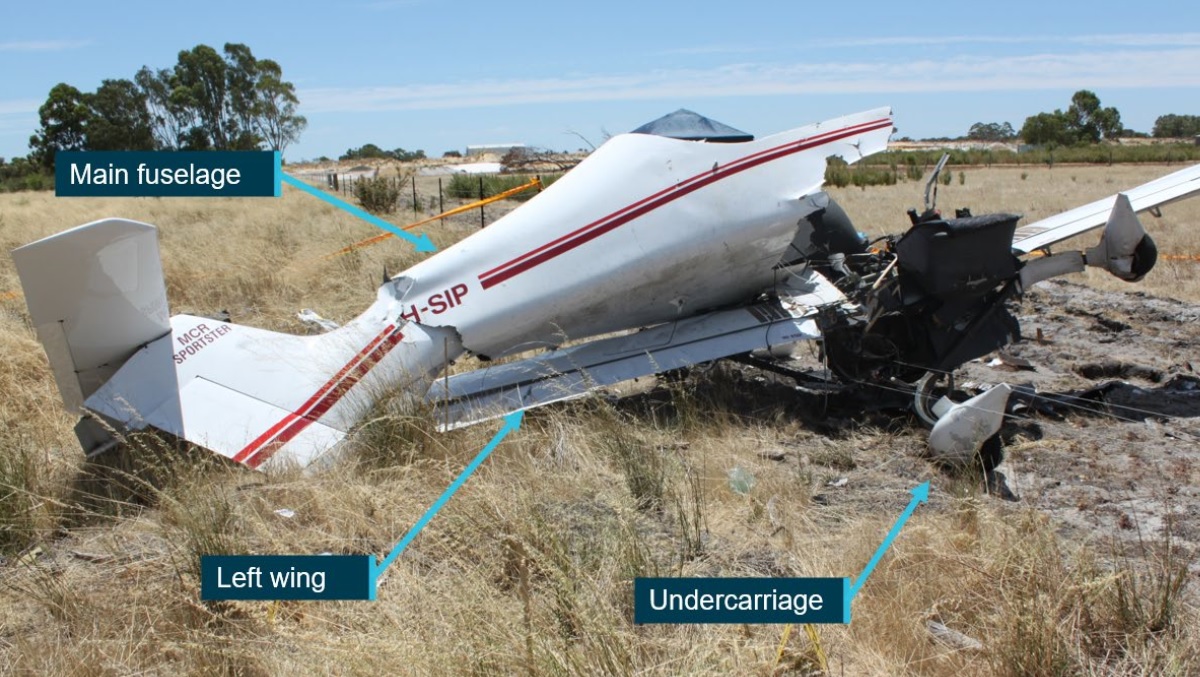
The ATSB has found a partial engine power loss brought down a Dynaero MCR-01 light aircraft at Serpentine Airfield in WA in 2020 after the pilot attempted to turn back to the runway.
The plane, registered as VH-SIP, began running rough during a post-maintenance check flight at around 300 feet above ground level before stalling and crashing, killing the pilot.
In its final report, the ATSB pointed to its Avoidable Accidents Handbook to remind pilots that they should not try to turn around in the event of a partial loss of engine power. The ATSB’s director of transport safety, Dr Stuart Godley, said partial power loss is a “more frequent and a more complex occurrence” than total power loss.
“The ATSB encourages pilots to review the recommended partial power loss procedure in their aircraft’s pilot operating handbook and cautions against attempting to turn back towards the runway under reduced power unless in controlled situations where sufficient altitude exists,” he said.
The ATSB found multiple maintenance tasks in the aircraft’s return to service after a significant period of inactivity were not adequately carried out, and that the left carburettor of the aircraft’s engine was missing a component and contained a significant amount of contamination.
“This likely resulted in over-fuelling of the carburettor at a low power setting and likely produced subsequent engine rough running at higher power settings,” Dr Godley explained.
The ATSB also found the pilot had probably consumed a significant amount of alcohol the night before the accident, which increased the risk of post-alcohol impairment – a witness described them as having been “really drunk” at a social event the previous night.
“While regulations require a minimum time between drinking and flying, there is considerable evidence that pilot performance may be impaired for much longer periods. Post-alcohol impairment can increase the potential for spatial disorientation for up to 48 hours.
“While a pilot may be legally able to fly eight hours after drinking, the residual effects of alcohol may seriously impair their performance when they need it most, such as during an emergency,” the report read.
Additionally, the ATSB found the pilot was unfamiliar with the aircraft and engine type, which increased the risk of not being able to adequately manage an inflight emergency.
“The majority of the pilot’s total flight time was conducted in multi-engine, piston and turbine aircraft operations.
“Although the pilot had considerable experience, a review of the pilot’s logbook records found that they had not previously flown Rotax-powered aircraft or the Dynaero MCR-01 VLA,” the report read.















